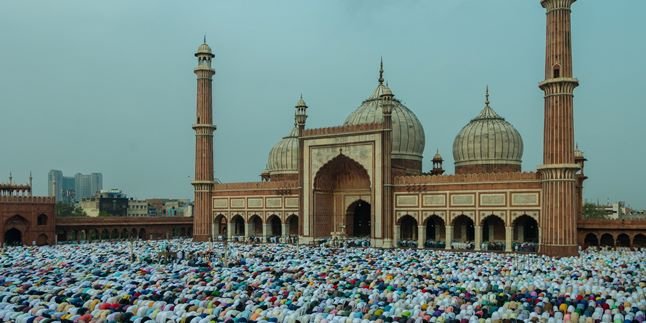Kapanlagi.com - Distribution may already be a familiar term or word to us. Especially for those of you who are involved in the business world, you must be familiar with this term. Because, the meaning of distribution is closely related to the business world.
In relation to the business world, distribution is one of the most important stages. But not only in the business world, the word distribution is also often encountered in various fields. It's no wonder then, that the word distribution often appears in a text and in everyday conversations. So, what is the true meaning of distribution?
To know and understand what distribution is, let's directly read the following explanation of the meaning of distribution that kapanlagi.com has summarized from various sources.
1. Meaning of Distribution

(credit: unsplash)
The word distribution comes from the English word distribution, which means 'the act of sharing something among a number of recipients'. In general, the word distribution has been absorbed into the Indonesian language. Therefore, the meaning of distribution can now be found in the Great Indonesian Dictionary (KBBI). According to KBBI, the meaning of distribution is the distribution (division, delivery) to several people or places.
In addition to distribution, there is also the term distributor. The term distributor is used to refer to someone who acts as a distributor, namely a person or entity responsible for distributing goods (merchandise). That is why the meaning of distribution is closely related to the business or enterprise world.
2. The Role of Distribution in Business and Enterprise
Based on the explanation of the meaning of distribution above, it can be understood that distribution is an important stage in a business. This is because distribution becomes the connecting process between the production activities carried out by the producer and the consumption by the consumer.
Without the distribution process, a business product will not be able to reach the hands of consumers widely. Therefore, distribution is also often interpreted as part of marketing activities. In addition, distribution can also play a role in the efforts of business actors to maintain the stability of the production process. Because when the distribution process is hindered, the production process will also be affected.
3. The Essence of Distribution Activities

(credit: unsplash)
As one of the important stages in business, distribution cannot be underestimated. Moreover, distribution is actually a complex economic activity. Within distribution, there are several important sub-activities that must be carried out to the maximum extent.
Yes, in practice, the meaning of distribution is not just sending production goods to consumers. More than that, distribution also includes various other activities that support productivity. Here are some things that are the essence of distribution activities.
- Buying goods and services from larger producers or traders.
- Grouping products according to type, size, and quality.
- Introducing goods or services to consumers, including advertising through various media.
- Introducing goods or services widely to reach many consumers.
- Tracking or ensuring timely delivery of production goods.
- Packaging production goods properly.
- Estimating the potential sales locations and market share of the products sold.
4. Types of Distribution
Not only complex, distribution must also be studied in detail. It turns out that distribution is still divided into two types, namely direct and indirect. In general, here are the differences between the two.
1. Direct Distribution
As the name suggests, direct distribution is a distribution where the delivery or sales process is done directly by the producer to the consumer. For example, farmers who directly sell their harvest to the public as buyers or consumers.
2. Indirect Distribution
Meanwhile, indirect distribution is a distribution process where the delivery is done through a distributor as an intermediary agent. In fact, indirect distribution can involve more than one distributor. For example, goods are purchased by a wholesaler, then sold by a retailer, and then purchased by consumers.
5. Distribution Actors

(credit: unsplash)
The complexity of distribution activities is also reflected in the number of parties involved. Yes, the term distributor does not only refer to one party or actor. On the contrary, distributors consist of several parties. Therefore, in addition to the meaning of distribution, it is also important to know these parties. Here are some actors or parties involved in distribution.
1. Agent
An agent is a distributor or party responsible for delivering goods from the manufacturer to the consumer. Agents receive profits in the form of commissions.
2. Merchant
A merchant is a party that buys goods from the manufacturer and resells them to consumers.
3. Exporter
An exporter is a party that distributes goods from domestic manufacturers to consumers abroad.
4. Importer
In addition to exporters, international distribution can also involve importers. Importers are parties that distribute goods from abroad to consumers in the country.
5. Broker
A broker is a distributor who plays a role in connecting manufacturers with potential consumers. Therefore, brokers will not invest capital. The broker's profit will be obtained in the form of fees from manufacturers and consumers for their services.
6. Commissioner
A commissioner is a party who acts as a buyer and seller in their own name.
That is among the reviews of the explanation of the meaning of distribution and its types. Hopefully, it is beneficial and can enhance your knowledge!
(kpl/gen/psp)
Disclaimer: This translation from Bahasa Indonesia to English has been generated by Artificial Intelligence.















